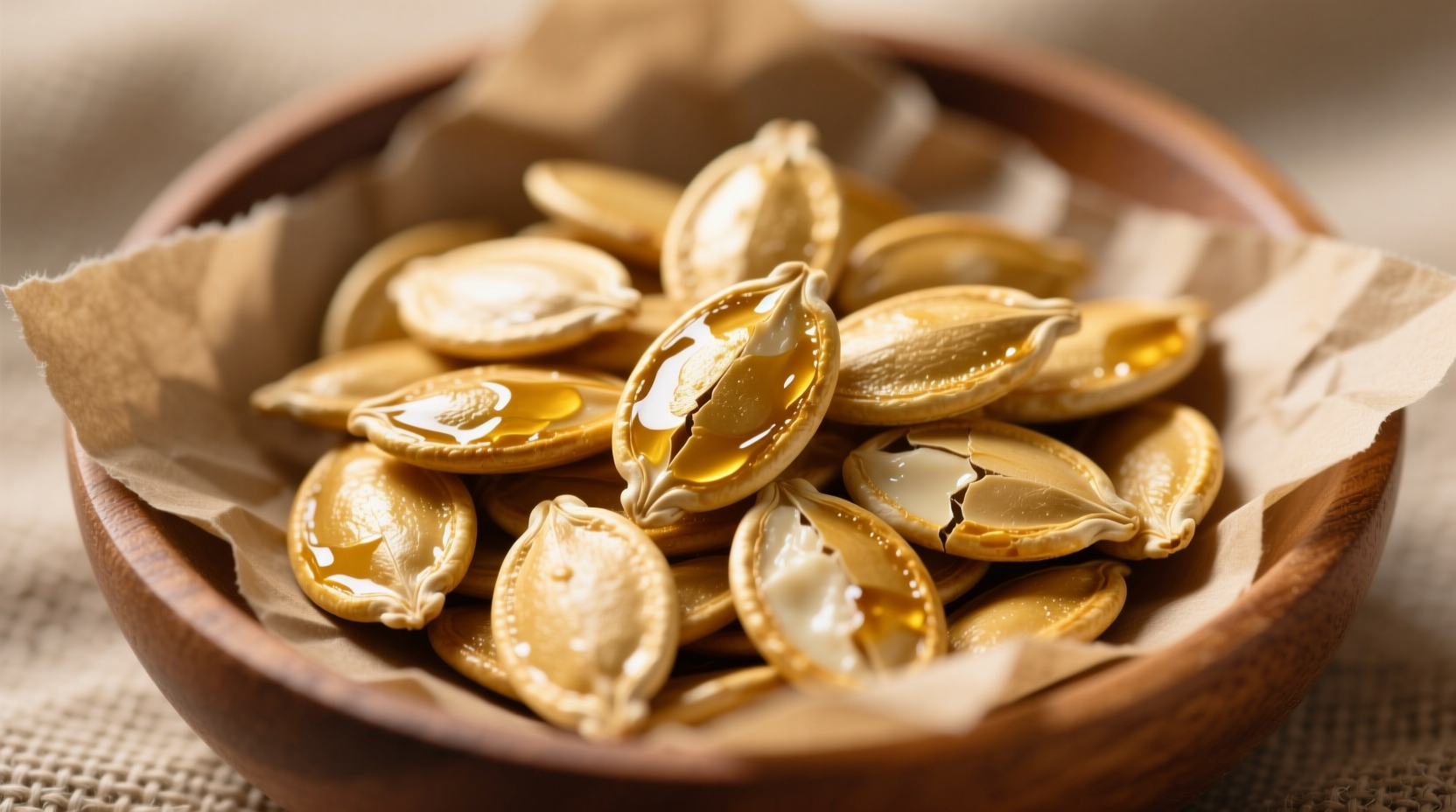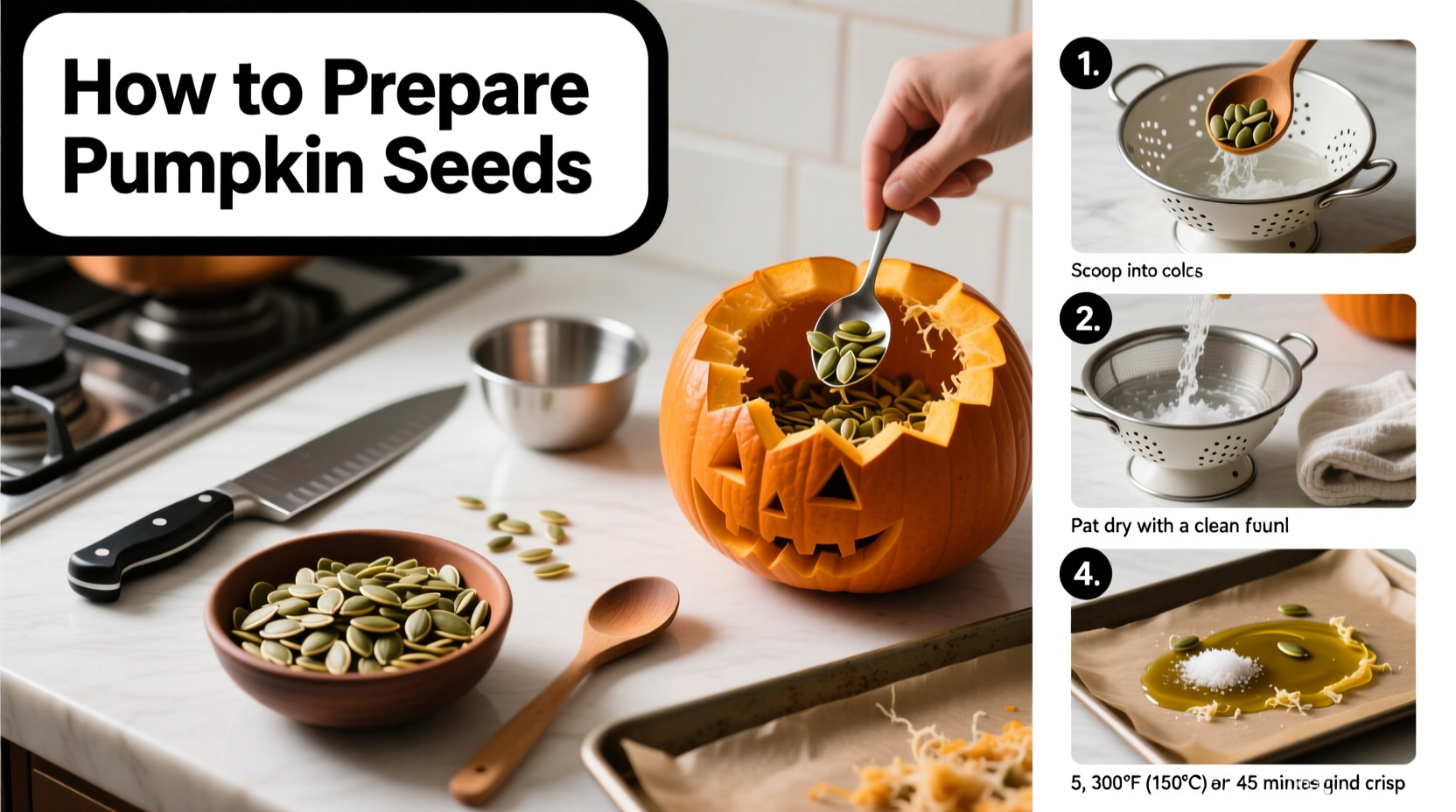Transform your Halloween pumpkin carving into a culinary opportunity with this comprehensive guide to preparing pumpkin seeds. Forget wasting these nutritional powerhouses—properly prepared pumpkin seeds offer a crunchy, flavorful snack that's rich in essential nutrients while reducing food waste. Professional chef Antonio Rodriguez shares techniques refined through years of working with ingredients in both Michelin-starred kitchens and everyday home cooking environments.
Why Pumpkin Seeds Deserve Your Attention
Pumpkin seeds, also known as pepitas, contain remarkable nutritional benefits that make them worth the minimal preparation effort. According to USDA FoodData Central, just one ounce (28g) provides 8.5g of protein, 5mg of magnesium, and significant amounts of zinc and healthy fats. Unlike store-bought versions loaded with preservatives, homemade roasted pumpkin seeds let you control ingredients while creating zero-waste value from your seasonal pumpkin.
Essential Tools and Ingredients
Before you begin, gather these basic kitchen items that most home cooks already own:
- Mixing bowls (one large, one medium)
- Baking sheet or roasting pan
- Parchment paper or silicone mat
- Sharp knife and sturdy spoon
- Colander or fine mesh strainer
- Tea towel or paper towels
Step-by-Step Pumpkin Seed Preparation
Extracting Seeds Properly
Carefully cut open your pumpkin with a sharp knife, creating a lid with angled edges that won't fall inside. Use a sturdy metal spoon to scrape seeds and stringy pulp from the interior walls. Work systematically from top to bottom, applying firm pressure against the pumpkin walls to maximize seed collection. This initial extraction determines your final yield—thorough scraping typically recovers 90% of available seeds.
Cleaning Seeds Thoroughly
Transfer seeds and pulp to a large bowl filled with cold water. Use your hands to separate seeds from fibrous strands, allowing heavier seeds to sink while pulp floats. Pour off the water and debris, then repeat this washing process 2-3 times until water remains clear. Proper cleaning prevents bitter flavors during roasting—a common mistake that ruins many homemade batches.
| Seed Quantity | Oven Temperature | Roasting Time | Stirring Frequency | Doneness Indicator |
|---|---|---|---|---|
| 1 cup raw seeds | 300°F (150°C) | 30-35 minutes | Every 10 minutes | Golden brown, dry appearance |
| 2 cups raw seeds | 275°F (135°C) | 40-45 minutes | Every 15 minutes | Slight popping sounds, uniform color |
| 3+ cups raw seeds | 250°F (120°C) | 50-60 minutes | Every 20 minutes | Crisp texture when cooled |
Drying Methods Compared
Complete moisture removal before seasoning prevents steaming instead of roasting. You have three effective options:
- Air drying: Spread seeds on tea towel for 2-4 hours at room temperature (ideal for small batches)
- Oven drying: Place on unseasoned baking sheet at 200°F (95°C) for 15-20 minutes (best for immediate roasting)
- Dehydrator: 135°F (57°C) for 2-3 hours (most consistent results for large quantities)
The National Center for Home Food Preservation confirms that thorough drying significantly improves texture and prevents bacterial growth during storage. Properly dried seeds should feel completely dry to the touch with no visible moisture.
Seasoning Techniques That Deliver Flavor
Apply seasonings to damp seeds for maximum adhesion. Professional chefs recommend these proven combinations:
- Classic savory: 1 tbsp olive oil, 1 tsp sea salt, ¼ tsp garlic powder, ¼ tsp smoked paprika
- Sweet cinnamon: 1 tbsp melted coconut oil, 1 tbsp maple syrup, 1 tsp cinnamon, ¼ tsp nutmeg
- Spicy chili: 1 tbsp avocado oil, 1 tsp chili powder, ½ tsp cumin, ¼ tsp cayenne
For optimal flavor development, toss seeds thoroughly in seasoning mixture and let rest 10 minutes before roasting. This allows flavors to penetrate while the oil coats each seed evenly.
Perfect Roasting Process
Spread seasoned seeds in single layer on parchment-lined baking sheet. Roast at 300°F (150°C), stirring every 10 minutes for even browning. Seeds are done when golden brown and make a hollow sound when tapped. Remove immediately from baking sheet to prevent residual heat from causing over-roasting. Cool completely before storing—this crucial step allows seeds to crisp fully.
Storage Solutions That Maintain Freshness
Store cooled seeds in airtight container at room temperature for up to two weeks. For extended freshness, include a silica gel packet to absorb moisture. Refrigeration extends shelf life to one month, while freezing preserves quality for up to three months. The University of Maryland Extension confirms that proper storage prevents rancidity in the seeds' healthy fats.
Troubleshooting Common Issues
Problem: Seeds remain chewy after roasting
Solution: Incomplete drying before roasting—extend drying time or increase oven temperature by 25°F
Problem: Seeds burn easily
Solution: Oven temperature too high—use lower temperature with longer cooking time
Problem: Uneven browning
Solution: Stir more frequently and ensure single-layer distribution on baking sheet
Creative Variations Worth Trying
Once you've mastered the basic technique, experiment with these chef-approved variations:
- Taco spice blend: Add 1 tsp each cumin, chili powder, and oregano with lime zest
- Everything bagel: Combine sesame seeds, poppy seeds, garlic, and onion flakes
- Curry coconut: Toss with curry powder and shredded coconut before roasting

Historical Context of Pumpkin Seed Consumption
Archaeological evidence shows Native American tribes in Mexico were processing pumpkin seeds as early as 7000 BCE. According to Smithsonian research, indigenous communities developed sophisticated drying and roasting techniques that preserved seeds for year-round consumption. When Spanish explorers arrived in the Americas, they documented pumpkin seeds being used both as food and medicine—practices that eventually spread globally through trade routes. This historical timeline demonstrates how proper seed preparation has evolved while maintaining core principles of thorough cleaning and controlled drying.











 浙公网安备
33010002000092号
浙公网安备
33010002000092号 浙B2-20120091-4
浙B2-20120091-4